Date 27 March 1943 | ||
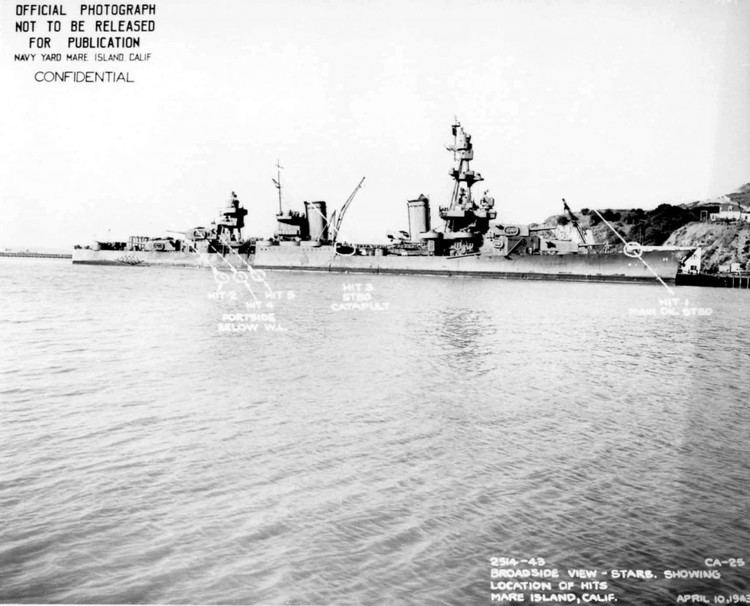 | ||
1 heavy cruiser severely damaged,2 destroyers slightly damaged,7 killed,20 wounded 1 heavy cruiser moderately damaged,1 heavy cruiser slightly damaged,14 killed,26 wounded Results Tactically inconclusive, Strategic United States victory Similar | ||
Battle of the komandorski islands
The Battle of the Komandorski Islands was a naval battle between American and Japanese forces which took place on 27 March 1943 in the North Pacific, south of the Soviet Komandorski Islands. The battle was a daylight surface engagement in which air support played a negligible role and in which the inferior force escaped complete destruction mostly by luck.
Contents
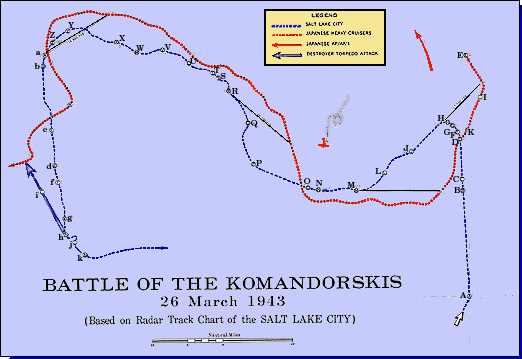
Background
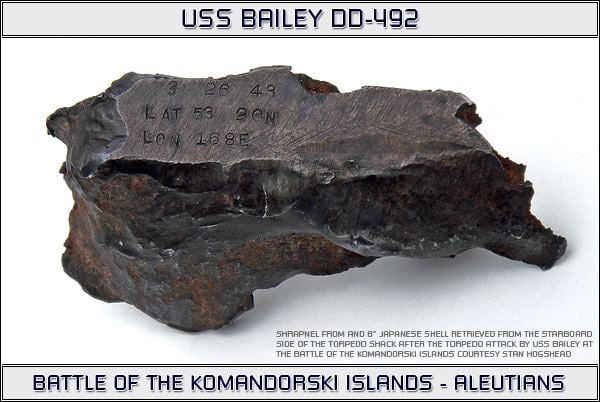
When the United States became aware of Japanese plans to send a supply convoy to their forces on the Aleutian Islands of Alaska, U.S. Navy ships commanded by Rear Admiral Charles McMorris were sent to prevent this. The fleet consisted of the heavy cruiser Salt Lake City, the light cruiser Richmond and the destroyers Coghlan, Bailey, Dale and Monaghan.
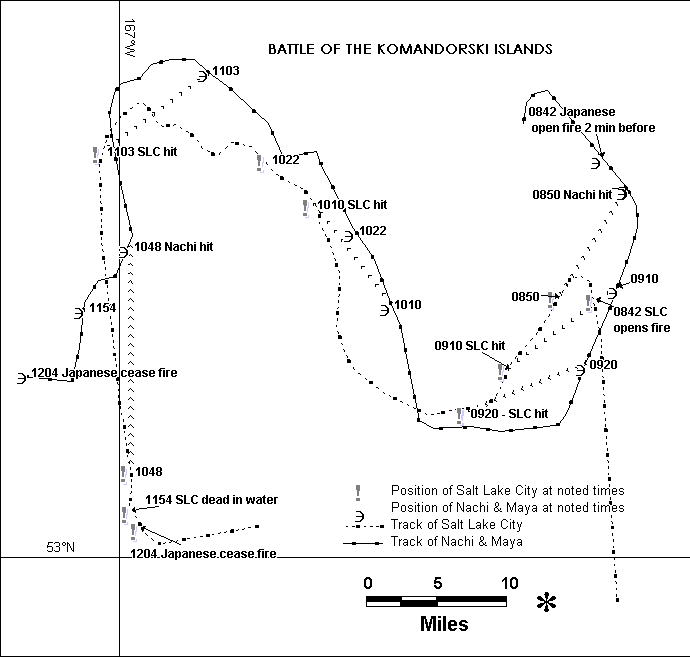
American intelligence estimated that the Japanese escort consisted of one heavy cruiser, one light cruiser, and four destroyers. However, the Japanese 5th fleet had been reinforced by two more cruisers, so that the Japanese escort force actually consisted of the heavy cruisers Nachi and Maya, the light cruisers Tama and Abukuma, and the destroyers Wakaba, Hatsushimo, Ikazuchi, and Inazuma, commanded by Vice Admiral Boshiro Hosogaya. On the early morning of 26 March, the Japanese convoy was intercepted by the American picket line some 100 miles south of the Komandorski islands and 180 miles west of Kiska, just to the west of the International Date Line. Because of the remote location of the battle and chance encounter on open ocean, neither fleet had air or submarine assistance, making this one of the few engagements exclusively between surface ships in the Pacific Theater and one of the last pure gunnery duels between fleets in naval history.
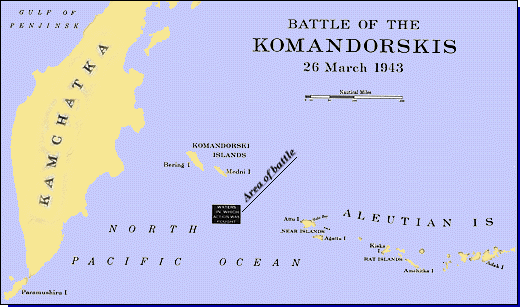
Although the Japanese cruisers heavily outgunned the American force, the engagement was tactically inconclusive. Both fleets suffered damage, with the U.S. Navy warships escaping almost by luck. With the Japanese fleet on the edge of victory, Admiral Hosogaya — not realizing the heavy damage his ships had inflicted and fearing American war planes would appear — retired without destroying his enemy. This amounted to a strategic defeat, as it ended Japanese attempts to resupply the Aleutian garrisons by surface ship, leaving only submarines to conduct supply runs. Hosogaya was accordingly retired from active service after the battle.
Battle
As the range closed, Bailey opened fire on Nachi at a range of 14,000 yd (13,000 m) and then switched to a light cruiser. Coghlan opened fire on Nachi at a range of 18,000 yd (16,000 m).
Salt Lake City fired 806 armor-piercing projectiles and then 26 high-capacity shells after the supply of armor-piercing ammunition was exhausted. Powder and shells were manhandled aft from the forward magazines to keep the after guns firing. Salt Lake City′s rudder stops were carried away, limiting her to 10° course changes.
United States Navy
Task Group 16.6 - RADM Charles McMorris, Commander, Task Group 16.6
Destroyer Squadron 14 - CAPT Ralph Riggs
Imperial Japanese Navy
Northern Force - VADM Boshiro Hosogaya, Commander, Fifth Fleet (Northern Force) Cruiser Division One:
Destroyer Division 21: - CAPT Amano Shigetaka
D Convoy - RADM Tomoichi Mori, Commander, Destroyer Squadron One
Destroyer Division Six: - CAPT Takahashi Kameshiro
2nd Escort Force
